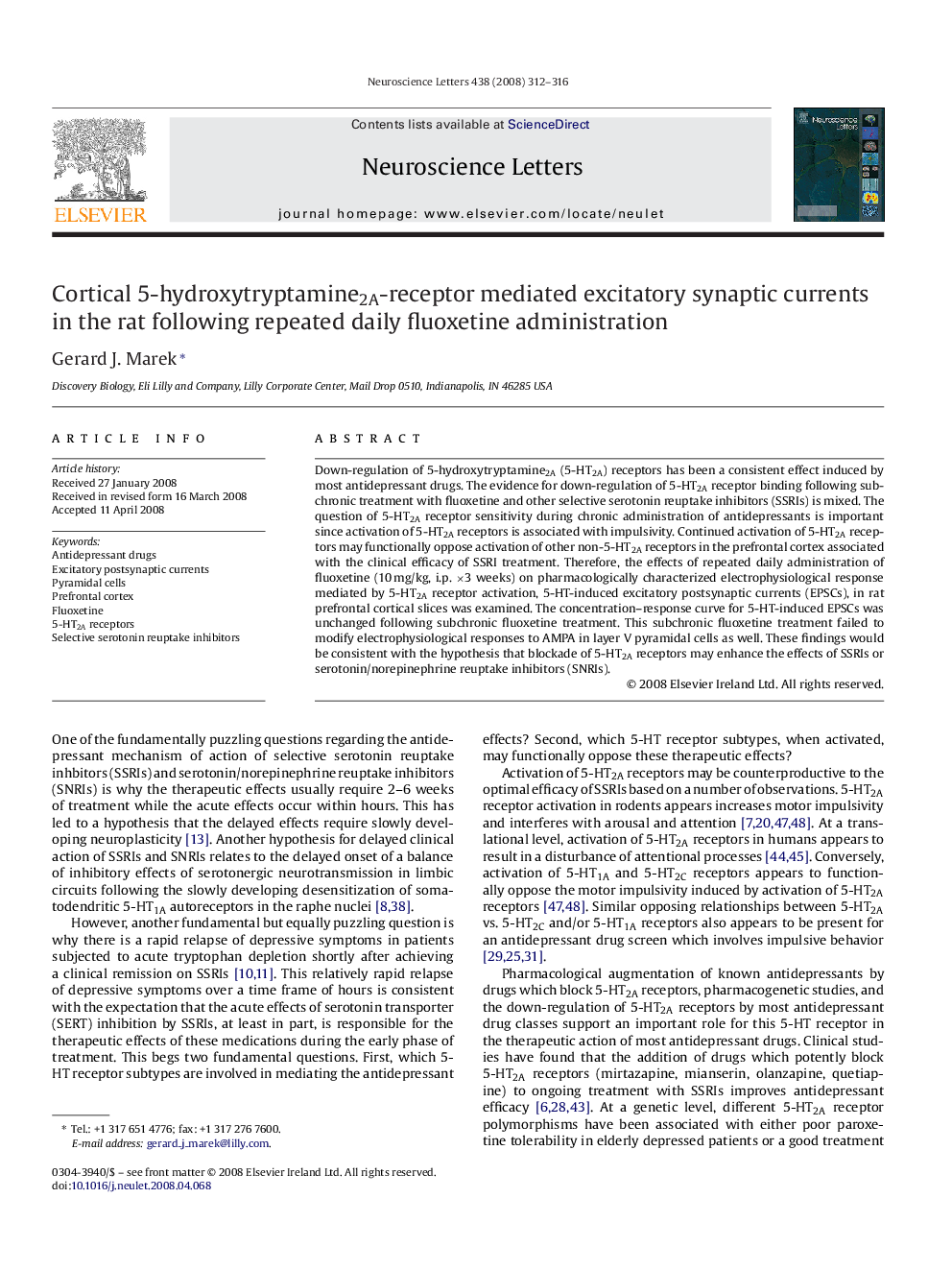| Article ID | Journal | Published Year | Pages | File Type |
|---|---|---|---|---|
| 4348139 | Neuroscience Letters | 2008 | 5 Pages |
Down-regulation of 5-hydroxytryptamine2A (5-HT2A) receptors has been a consistent effect induced by most antidepressant drugs. The evidence for down-regulation of 5-HT2A receptor binding following subchronic treatment with fluoxetine and other selective serotonin reuptake inhibitors (SSRIs) is mixed. The question of 5-HT2A receptor sensitivity during chronic administration of antidepressants is important since activation of 5-HT2A receptors is associated with impulsivity. Continued activation of 5-HT2A receptors may functionally oppose activation of other non-5-HT2A receptors in the prefrontal cortex associated with the clinical efficacy of SSRI treatment. Therefore, the effects of repeated daily administration of fluoxetine (10 mg/kg, i.p. ×3 weeks) on pharmacologically characterized electrophysiological response mediated by 5-HT2A receptor activation, 5-HT-induced excitatory postsynaptic currents (EPSCs), in rat prefrontal cortical slices was examined. The concentration–response curve for 5-HT-induced EPSCs was unchanged following subchronic fluoxetine treatment. This subchronic fluoxetine treatment failed to modify electrophysiological responses to AMPA in layer V pyramidal cells as well. These findings would be consistent with the hypothesis that blockade of 5-HT2A receptors may enhance the effects of SSRIs or serotonin/norepinephrine reuptake inhibitors (SNRIs).
